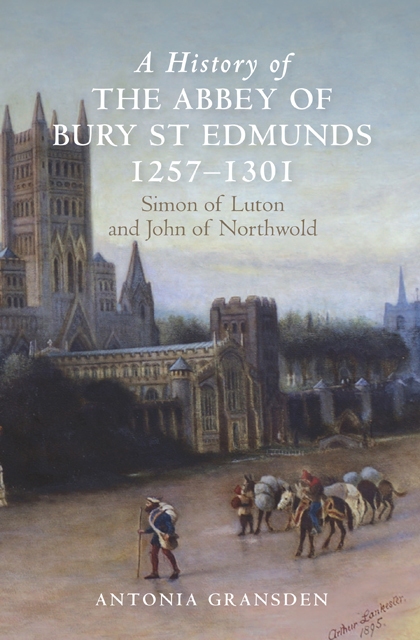Book contents
- Frontmatter
- Dedication
- Contents
- List of plates
- List of figures
- Preface
- Editorial note
- Dedication
- Acknowledgements
- Abbreviations
- Maps and plans (figures 1–11)
- Part I Introduction
- Part II Abbatial Governance
- Part III The Abbey’s Economy
- Part IV Religious Life and Reform
- Part V Intellectual and Cultural Life
- Appendix I The identity of the abbot’s justices, Henry of Guildford and Henry of Shenholt (in 1287)
- Appendix II The monks’ dietary regime: their food and drink
- Select List of the Registers and Customaries Cited
- Select List of Further Manuscripts Cited
- Select Bibliography
- Index
- Backmatter
12 - William of Hoo, Sacrist 1280–94
Published online by Cambridge University Press: 22 February 2023
- Frontmatter
- Dedication
- Contents
- List of plates
- List of figures
- Preface
- Editorial note
- Dedication
- Acknowledgements
- Abbreviations
- Maps and plans (figures 1–11)
- Part I Introduction
- Part II Abbatial Governance
- Part III The Abbey’s Economy
- Part IV Religious Life and Reform
- Part V Intellectual and Cultural Life
- Appendix I The identity of the abbot’s justices, Henry of Guildford and Henry of Shenholt (in 1287)
- Appendix II The monks’ dietary regime: their food and drink
- Select List of the Registers and Customaries Cited
- Select List of Further Manuscripts Cited
- Select Bibliography
- Index
- Backmatter
Summary
The toponyms of William of Hoo and as William of Luton suggest that he was a relative or other connection of Abbot Simon of Luton. He had held the office of chamberlain under Abbot Simon and shortly after John of Northwold’s succession was appointed sacrist. His appointment followed the resignation in the spring of 1280 of the apparently ineffectual Simon of Kingston. At about the same time the aged and debilitated prior, Robert Russel, resigned and Stephen of Ixworth was appointed in his place. Hoo was, therefore, one of two new men appointed to promote reform in the abbey and its administration. It may well have been at his instance that Abbot John and the convent obtained the important writ of 16 December 1280, confirming to the convent the town of Bury St Edmunds and the mint, and all their profits. The writ states that during vacancies the town and mint would not be taken over by the royal keeper of the abbot’s barony. The town was assigned to the sacristy and was its most lucrative asset. Profits from it were especially necessary because on top of the high cost of administration were the debts which Hoo inherited from his predecessor.
The sacrist’s office
As explained above, the substance of the writ of 16 December 1280 was incorporated in the Composition (conventio) agreed between Abbot John and the convent and issued on 24 June 1281 which was confirmed by the king on 16 November. The latter sets out in detail the division of portions between abbot and convent, and specifies the exact allocation of the property and rights assigned to each obedientiary. It is apparent that although the cellarer was the most important landholder amongst the obedientaries, the sacrist’s income from other sources was as great as the cellarer’s, and that more power was assigned to him than to any of his colleagues. The royal confirmation states that the sacrist held the town, its lands, meadows, fairs, markets, courts and rents; he had the right to treasure trove, reliefs, escheats and all other temporal and spiritual rights. He also controlled the mint and drew its profits.
- Type
- Chapter
- Information
- A History of the Abbey of Bury St Edmunds, 1257-1301Simon of Luton and John of Northwold, pp. 102 - 116Publisher: Boydell & BrewerPrint publication year: 2015

